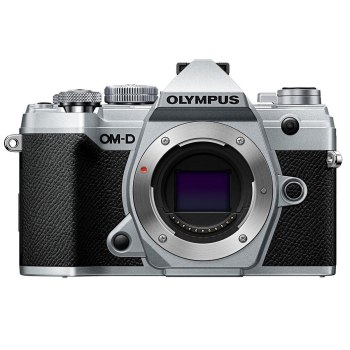- Excellent image quality
- Effective stabilization
- Rugged build
- Portable and lightweight
- Excellent stabilization
- Weather-sealed
- Complex menu system
- Expensive
- Small battery life
- No headphone jack
Olympus OM-D E-M1 Mark III vs Olympus OM-D E-M5 Mark III
When it comes to Olympus cameras, two models that often come up in conversation are the Olympus OM-D E-M1 Mark III and the Olympus OM-D E-M5 Mark III. Both of these cameras are part of the esteemed OM-D series, known for their exceptional image quality, durability, and innovative features. In this comparison, we'll delve into the details of each camera to help you decide which one is best suited for your photography needs.
Design and Build
Both the E-M1 Mark III and E-M5 Mark III boast a rugged and weather-sealed design, making them perfect for photographers who shoot in harsh environments. The E-M1 Mark III has a slightly larger and heavier build, weighing in at 580g compared to the E-M5 Mark III's 414g. However, both cameras are designed to be compact and ergonomic, with intuitive controls and a comfortable grip.
Image Quality
In terms of image quality, both cameras deliver exceptional results thanks to their high-resolution sensors and advanced image processing engines. The E-M1 Mark III features a 20.4-megapixel Live MOS sensor, while the E-M5 Mark III has a 20.4-megapixel Live MOS sensor as well. Both cameras produce stunning images with excellent detail, color accuracy, and dynamic range.
Autofocus
One area where the E-M1 Mark III excels is in its autofocus system. It features a advanced 121-point all-cross-type phase-detection AF system, which provides fast and accurate subject tracking. The E-M5 Mark III, on the other hand, has a 121-point contrast-detection AF system, which is still highly effective but may not be as quick or precise as the E-M1 Mark III's system.
Burst Mode
If you're into sports or wildlife photography, the E-M1 Mark III's burst mode capabilities may give it an edge. It can shoot at up to 60 frames per second (fps) in Silent Mode and 15 fps with the mechanical shutter. The E-M5 Mark III, while still capable, tops out at 30 fps in Silent Mode and 10 fps with the mechanical shutter.
Video Capabilities
Both cameras are capable of producing high-quality video, but the E-M1 Mark III has a few more advanced features. It can shoot 4K video at up to 30p, while the E-M5 Mark III is limited to 24p. The E-M1 Mark III also has a more comprehensive set of video features, including OM-Log mode and a headphone jack.
Battery Life
In terms of battery life, the E-M1 Mark III has a slight advantage, with up to 440 shots per charge compared to the E-M5 Mark III's 310 shots. However, both cameras have decent battery life, and you can easily extend it by using the optional battery grip or carrying spare batteries.
Price
Finally, there's the matter of price. The Olympus OM-D E-M1 Mark III is generally priced higher than the E-M5 Mark III, reflecting its more advanced features and capabilities. However, if you're on a budget, the E-M5 Mark III offers an excellent balance of performance and value.
In conclusion, both the Olympus OM-D E-M1 Mark III and E-M5 Mark III are exceptional cameras that showcase the best of what Olympus cameras have to offer. While the E-M1 Mark III has some notable advantages in terms of autofocus, burst mode, and video capabilities, the E-M5 Mark III is still a highly capable camera that delivers outstanding image quality and value. Ultimately, the choice between these two models will depend on your specific photography needs and priorities. If you're looking for the absolute best performance and features, the E-M1 Mark III may be the better choice. However, if you're on a budget or prioritize portability, the E-M5 Mark III is an excellent alternative that still delivers exceptional results.































